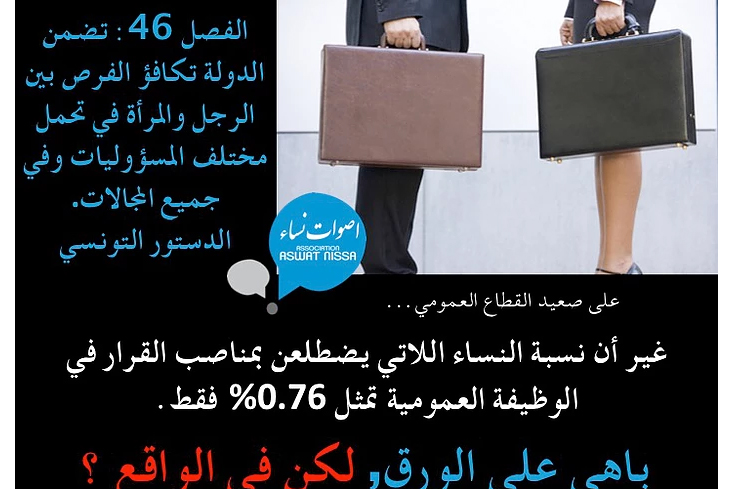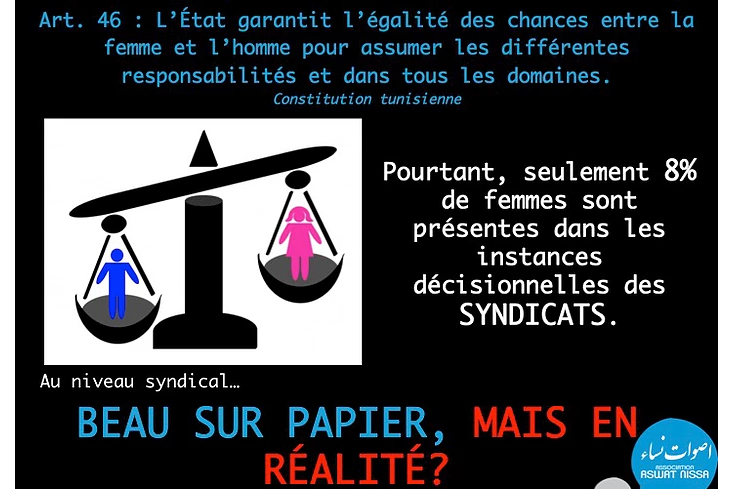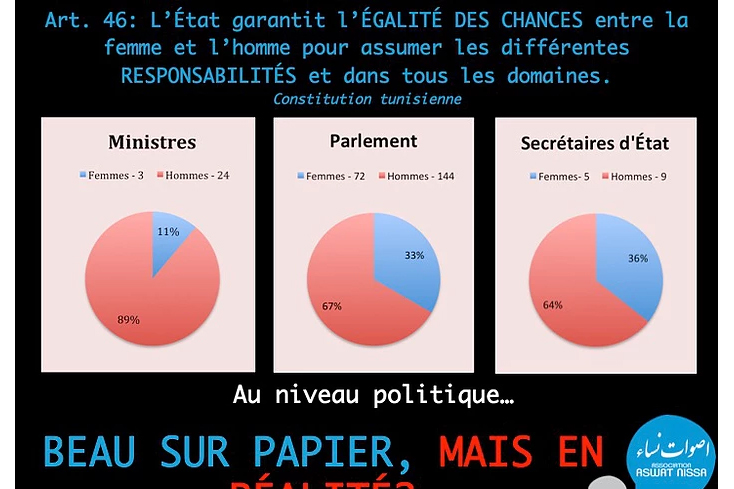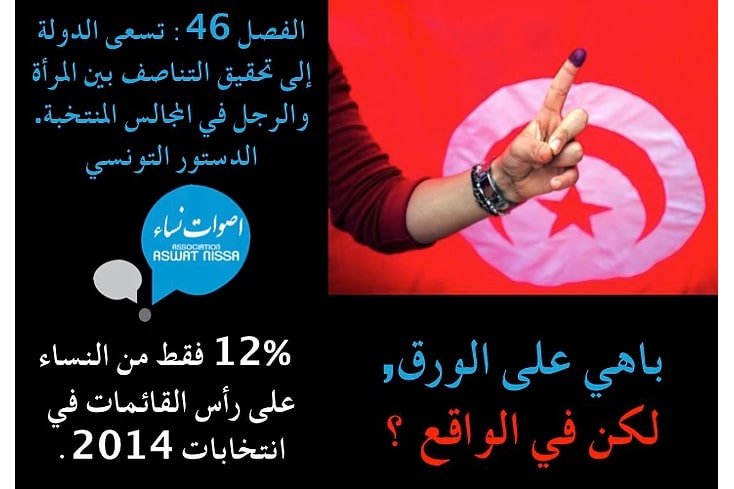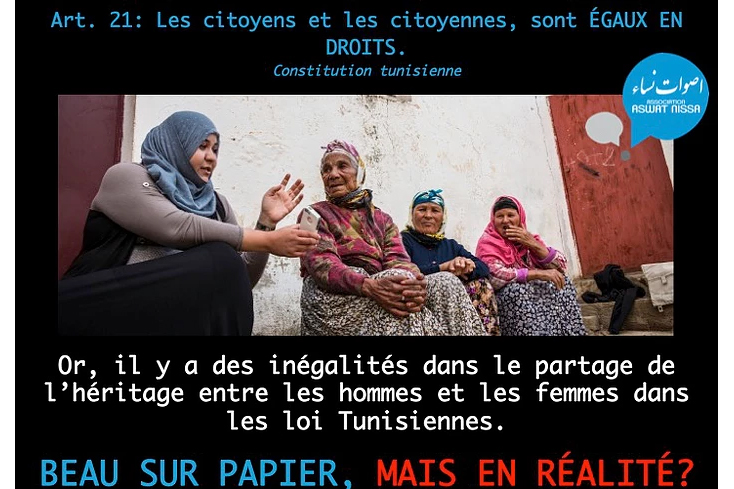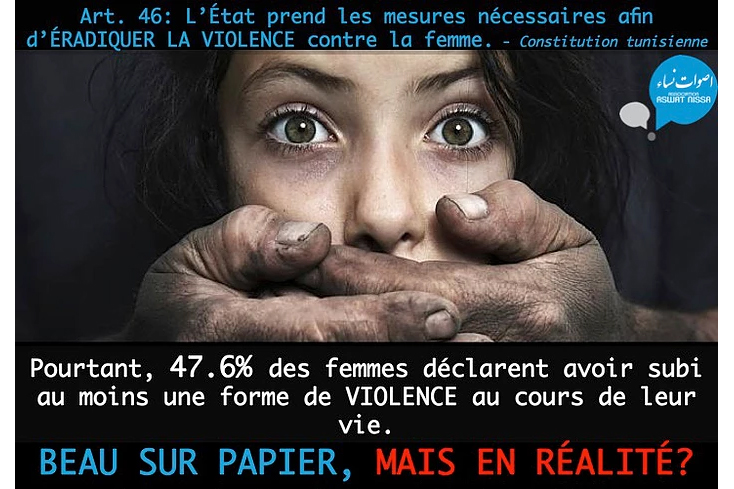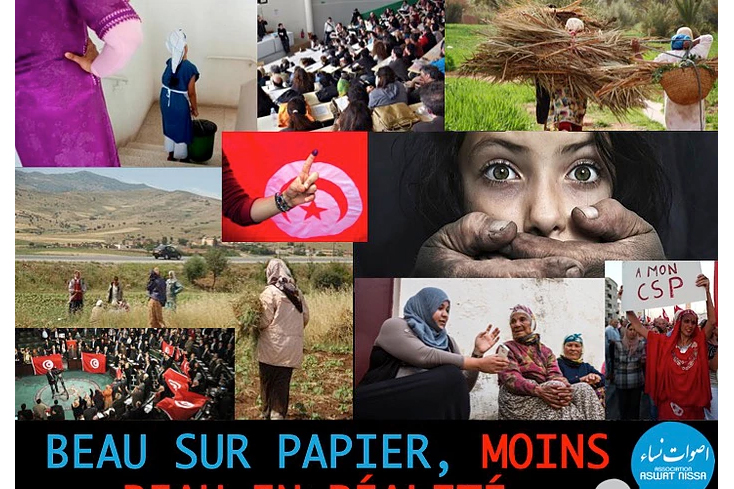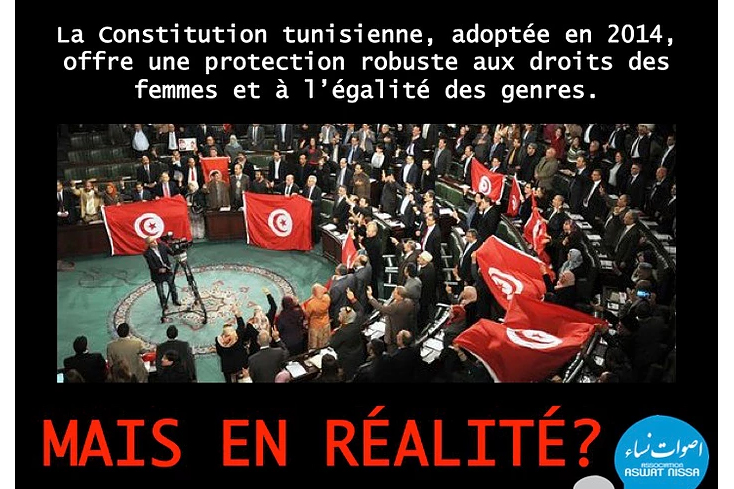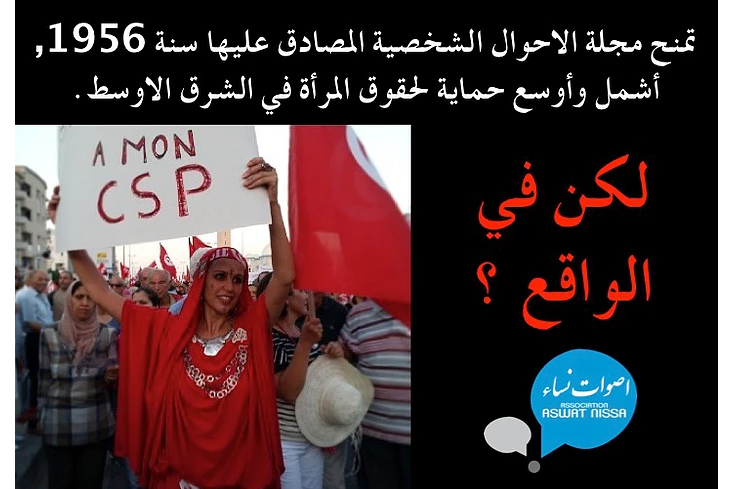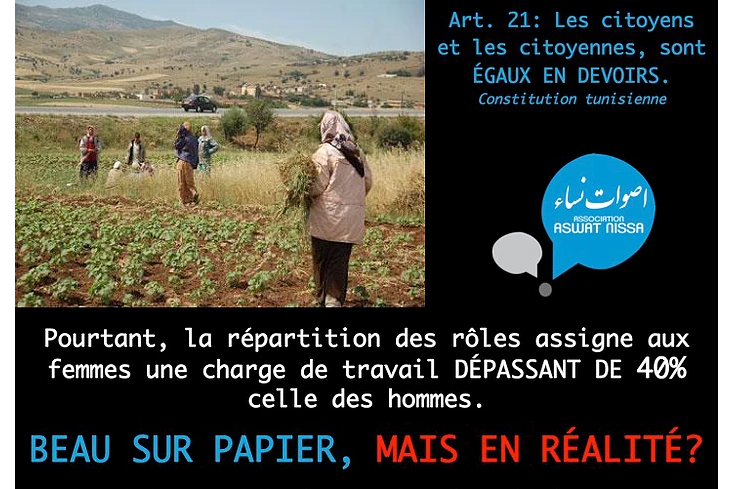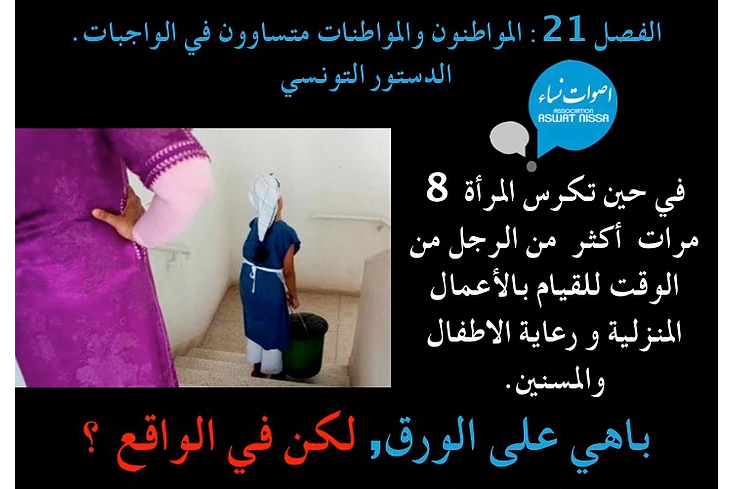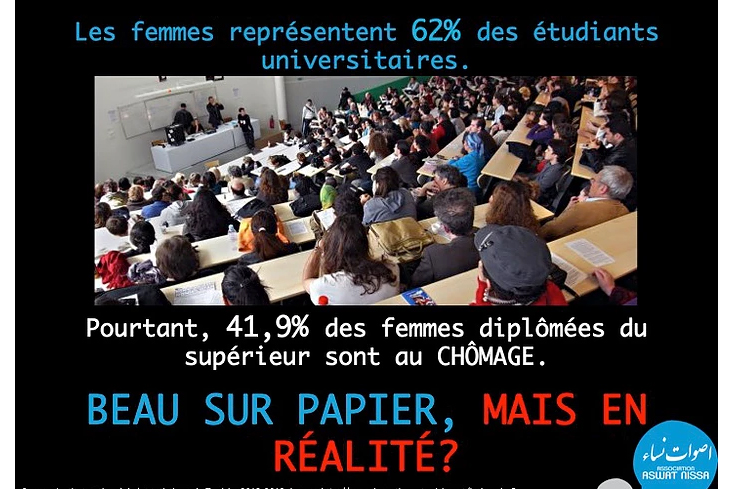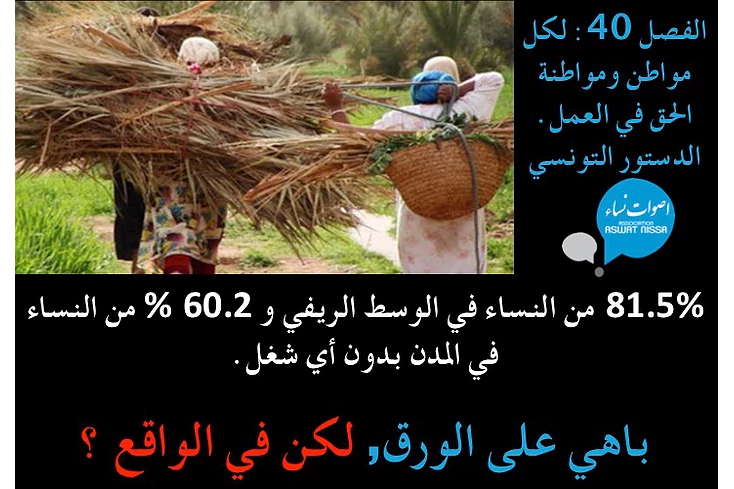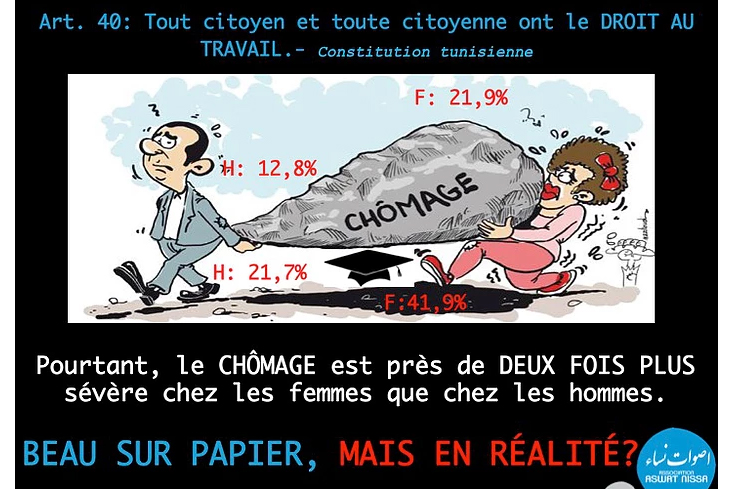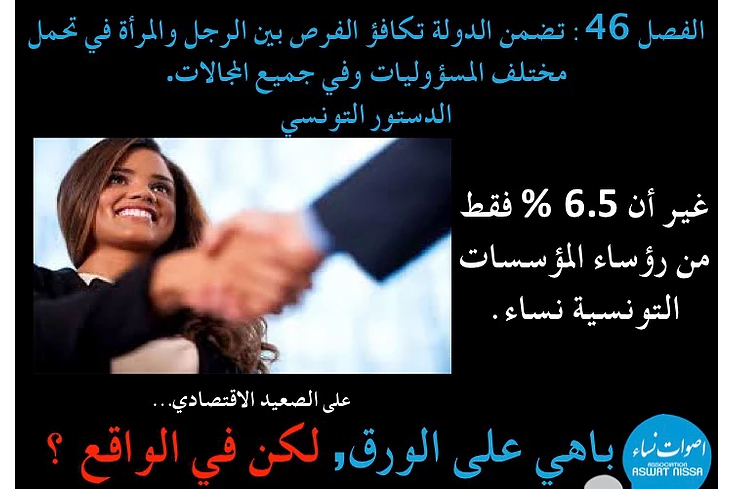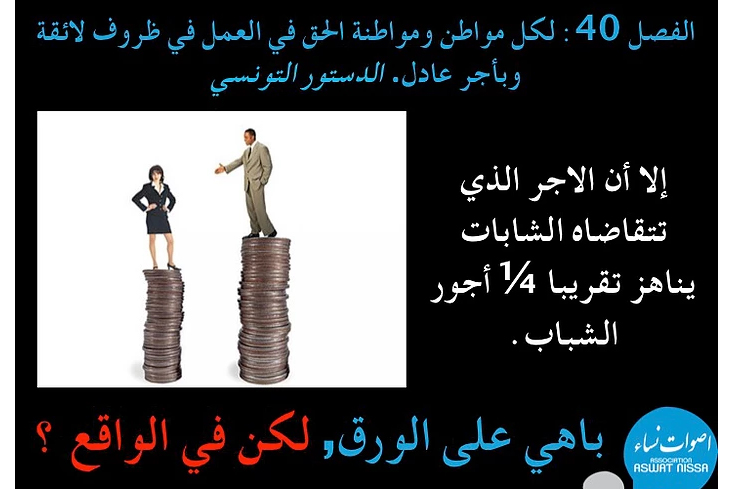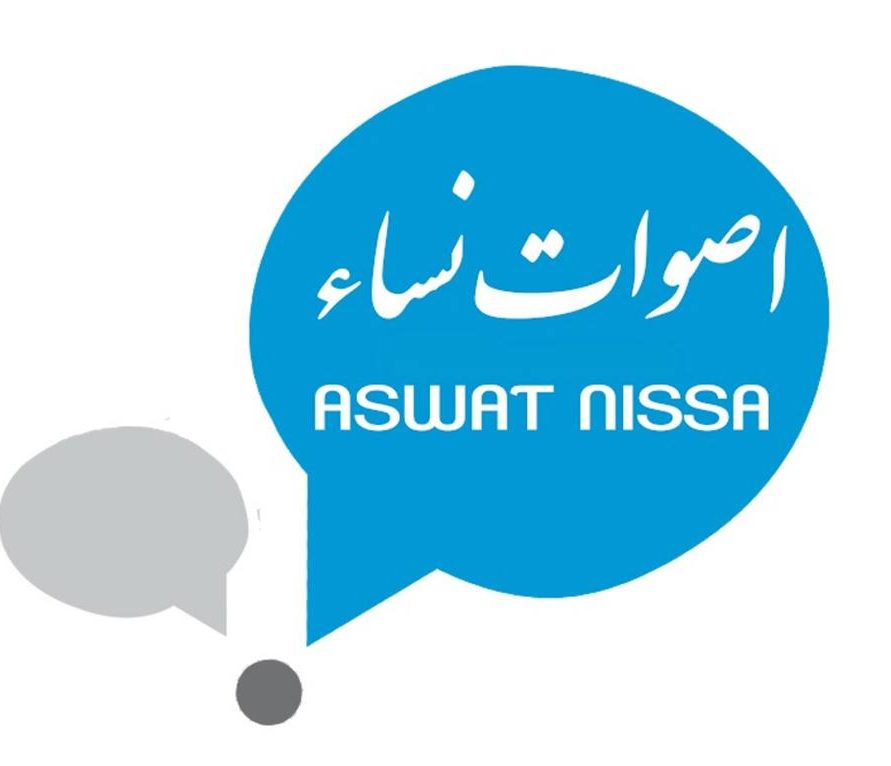Great on paper, but how is it in reality?
Great on paper, but how is it in reality?
The awareness-raising campaign “Great on paper, but how is it in reality?” was largely spread on social media during the National Women’s Day in Tunisia, on August 13th, 2015. This campaign denounced the gap between the fairly egalitarian laws in Tunisia and the daily struggles experienced by women.
Tunisia is generally recognized amongst the Middle East and North Africa (MENA) countries as a leader with regards to women’s rights and gender equality. This reputation is due to the adoption of the Personal Status Code in 1956 which abolished polygamy and gave considerable rights to women in divorce instances. The Personal Status Code greatly contributed to the emancipation of Tunisian women. The 2014 Constitution reaffirmed that progressive position by enshrining principles of equality and of non-discrimination. On paper, Tunisia is a model for gender equality.
However, this flawless picture is far from what is truly experienced by Tunisian women in their daily lives. In 2014, Tunisia was ranked 123rd out of 142 countries on the international scale assessing gender inequality with regards to access to health, education, economic opportunities, and political empowerment. In other words, Tunisia isn’t doing as great as it formally seems.
The campaign contained images of the current situation of women in Tunisia, thus evidencing that despite its good reputation, there is still a long way to go to reach equality. The situation hasn’t evolved since the adoption of the Personal Status Code. It is therefore time for Tunisians to go beyond the status quo and to adopt concrete measures to combat inequalities.
